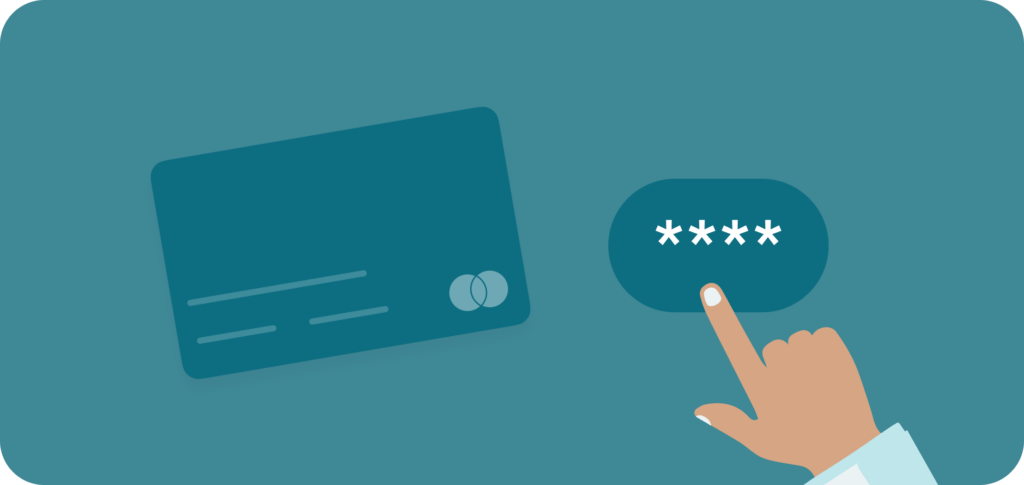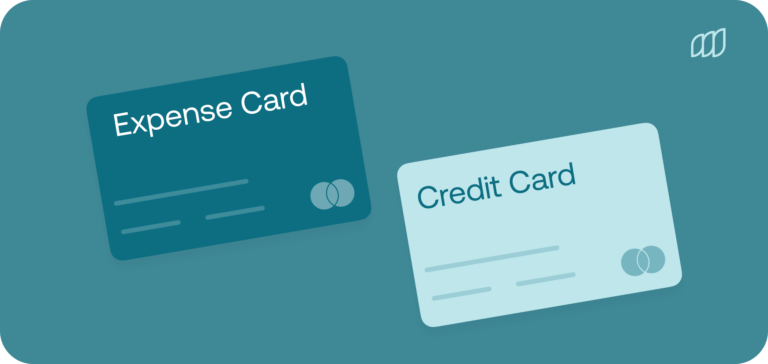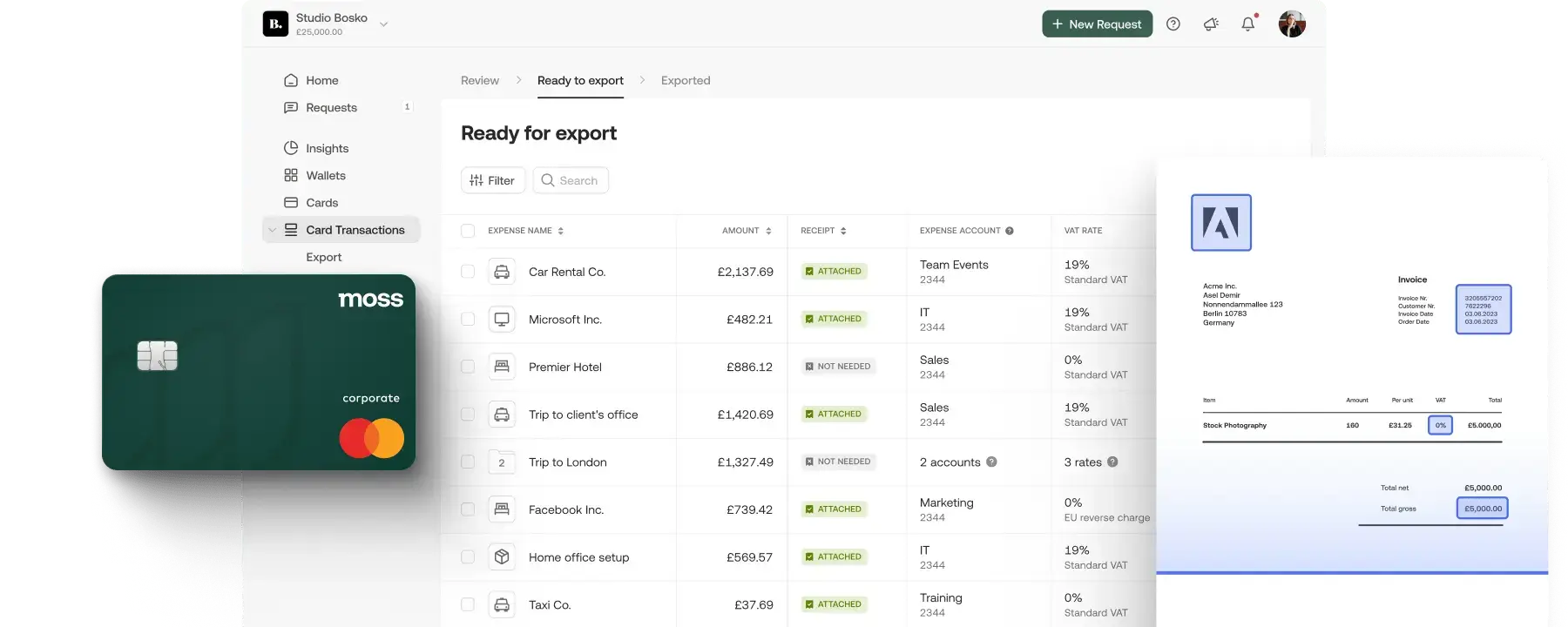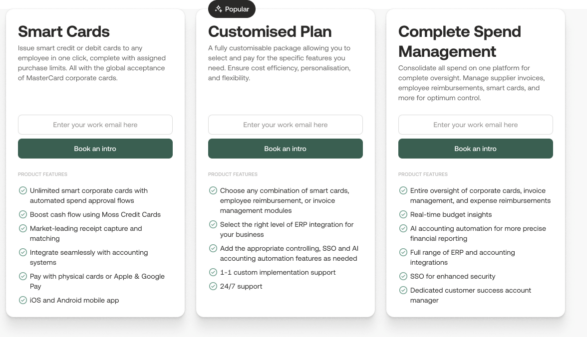In the not-so-distant past, handling employee expenses involved a hefty amount of administrative work and a mountain of paper receipts. Luckily, there are now lots of ways for businesses to make the process quicker and more efficient. One of the most popular is employee expense cards.
Employee expense cards save businesses time and money by giving employees controlled access to company funds. But there’s still a bit of confusion about how they work. In this guide we’ll explain how employee expense cards work and why they’re becoming an essential tool for many businesses.
What are employee expense cards?

Employee expense cards work in the same way as the cards you use every day. You can make payments in-store and online—the only difference is that they take funds from a business bank account rather than a personal one. In other words, they allow businesses to give their employees direct access to company funds.
This means that employees don’t have to spend their own money on work-related expenses, and businesses don’t have to deal with the headache of reimbursing their employees.
Under this general umbrella, there are a few different types of employee expense cards:
- Virtual employee expense cards use temporary card details, like card number and CVV code, and can be stored in digital wallets to make virtual card payments. Because virtual cards can be issued with custom transaction limits and are stored securely in digital wallets, they are far more secure than normal physical payment cards.
- Single-use cards can be used for one transaction only. A business will issue the card with a set balance that restricts the amount of money that is available to spend. The card will only work once, regardless of whether the employee uses the full balance or not. This type of employee expense card is popular for use on business trips, e.g. to pay for hotels or other one-off expenses. Single use cards are also usually virtual cards, meaning they’re given to the employee and stored on their phone.
- Employee credit cards are a popular alternative to employee debit cards. Instead of using bank account funds, they provide access to a line of credit. Just like normal credit cards, employee credit cards are a more convenient payment method for many companies. The credit card balance is settled monthly, so there’s no need to worry about remaining balance when paying. It’s possible to get physical employee expense cards if that’s your preference.
Modern employee expense cards are also supported by software which lets businesses control and change various different parameters. This includes setting budget limits, expiry dates and rules about where and when employees can use cards.
How do employee expense cards save time?

The main benefit of employee expense cards is the fact that they save time and resources for internal teams. They do this in a few different ways:
1. They streamline the reimbursements and approval process
Employee reimbursements become notoriously tricky the larger a business grows. It’s not much of an issue if the average employee doesn’t accumulate much in the way of expenses. But it can become a real headache when you have lots of different employees claiming.
Expense management software is one way to slash the amount of time your teams spend on reimbursements and admin. But employee expense cards take this one step further. Money that employees spend on business expense cards comes from the business’s account, so it doesn’t need to be reimbursed. Transactions simply need to be approved by a manager. This is as simple as uploading and reviewing a payment receipt.
2. They allow you to store all receipts and invoices in one place
Employees still need to provide proof of purchase when they use their expense card. Normally, this would involve handling physical paper receipts. But, in terms of efficiency, having to complete administrative tasks with paper is less than ideal. With expense card software, employees can scan their receipt with their phone camera and upload it for approval immediately. Once scanned, nobody has to deal with the paper receipt again. All in all, swapping paper receipts for digital receipts is a huge time saver.
3. They allow you to track spend and budgets more easily
Because you, as the employer, issue business expense cards yourself, you have full control over how they’re used. This means that you can set budgets for individual departments or team members and get real-time updates on how much they’re spending. This gives you a much clearer picture of where funds are going, and allows you to save time on planning, forecasting and a number of other internal processes.
How do employee expense cards save money?

Irrespective of industry or business model, time equals money. As a result, business credit cards also save businesses a significant amount of money:
1. They free up internal resources
Accounting teams dedicate a lot of resources and employee hours to various time-consuming manual processes. Any time they spend having to carry out manual tasks is time they could be using to cover other responsibilities.
Employee expenses and reimbursements are a common drain on accounting department resources. Normally it involves collecting paper receipts for every expense claim, or handing out cash from a petty cash fund whenever an employee needs to purchase something for work. Switching to employee expense cards can slash the amount of time your accounting team has to spend on reimbursements, meaning they can focus on more important tasks instead.
2. They make end of month reconciliation more accurate
When it comes time to balance the books at the end of the month, accuracy and efficiency are key. Any accounting errors or oversights in outgoing spend can be a signifiant headache which requires additional time and money to rectify.
Business credit cards speed up this process by digitising the paper trail. They collate all of your business spend and employee expense records in one place. Expense software allows you to sort and search records with ease. There’s also no need to deal with the arduous back and forth with employees when reimbursing expenses.
3. You can set custom limits for specific cards
It can be difficult to restrict spending on conventional employee cards without back end software controls. Luckily, modern employee expense cards are a much better alternative. It’s possible to create individual cards for individual employees or teams, and set custom spend limits on each one. Once they’ve reached the spend limit, they cannot use the card again. This helps cut back on unwanted spending because there’s no way for employees to spend more than you’ve allocated.
4. You can automate reporting and get better insights
Whenever there’s a way to automate a process, there’s potential for your business to save time and money. Employee expense cards don’t just offer a more convenient way to pay for work-related expenses, because they’re more than just cards. The software that powers them is what really sets them apart from the conventional way of dealing with employee expenses.
“Expense management software can help simplify the employee expense reimbursement process through automation.” – The Federation of Small Businesses
Employee expense cards allow businesses to automate much of the reporting associated with the accounts payable process. They also provide detailed insights about the amount of money that the business is spending, across multiple different accounts. This doesn’t just include employee expenses, it can also be subscriptions and other B2B payments.
Employee expense cards offer better security

On top of time and money savings, modern employee expense cards represent a step change in payment security. Conventional electronic payment cards are susceptible to misuse, especially through stolen customer credentials and card-not-present fraud. Implementation of Strong Customer Authentication (SCA) has introduced additional layers of security to prevent these attacks. But virtual employee expense cards eliminate the typical routes of attack because:
- They are typically set up for temporary use with specific spend limits or expiry dates
- They are not linked to personal user or cardholder details
- They use random card numbers which are stored in secure digital wallets
Employee expense cards vs. conventional business cards
Modern, software-driven employee expense cards have a number of features that make them a superior option to conventional business cards.
| Feature | Moss corporate cards | Conventional business cards |
| App support | Full in-app control over every card, including budget amendments, spend approvals and card freeze | Limited app support with a lack basic features and a lack of third-party integrations |
| Card availability | Physical cards, digital counterparts and unlimited virtual cards | Limited number of physical and digital cards |
| Budget controls | Set individual spend limits and budgets for every card | A set number of cards per business that have to be shared between teams |
| Virtual card support | Unlimited virtual cards with Apple Pay and Google Pay support | Limited to physical cards which can also be added to digital wallets |
| Spend visibility | Real-time spend data and spend insights compiled from all connected business accounts | Basic visibility that is typically limited to transactions and account balance via monthly statements |
| Credit applications | Quick application and approval process with £2.5 million credit per month | Complex application process, low spend limits and high charges |
Corporate credit cards from Moss

Moss corporate credit cards allow businesses to save time and money on a variety of internal accounting and expense-related processes. With an unlimited number of high credit limit virtual cards, you can delegate secure spending capabilities throughout your organisation. Moss also offers flexible repayment terms so you can choose how and when you want to settle your balance.
With full spend visibility over every transaction your team makes, and detailed insights from Moss, you’ll be able to shine a new light on your business’s cashflow. With a better understanding of where your money is going you can streamline spending and a host of internal processes at the same time.
FAQs
Employee expense cards are credit or debit cards that businesses give to employees to cover expenses and other work-related costs. Employee expense cards take money from the business’s bank account, or a line of credit that is provided to the business by a creditor.
Employee expense cards allow businesses to bypass the employee reimbursement process by giving employees access to company funds. They also save time and money on a number of internal accounting and administrative processes through automation.
Yes. Employee expense cards work just like normal payment cards, meaning you can use them online and in-store at card payment terminals.
Yes. Thanks to backend software, businesses can customise employee expense cards with individual budgets, expiry dates and more.
Moss customers can control their Moss cards in real-time via app. This includes approving transactions, freezing cards, altering budgets and more.








